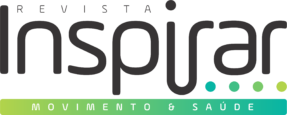 ☰
☰
 ☰
☰

Edição: 2014, Ed.6-OUT-NOV-DEZ
O acidente vascular encefálico (AVE) acomete o sistema nervoso central (SNC) e representa importante causa de comprometimento motor, sensorial e funcional de membro superior e inferior do hemicorpo. A terapia com espelho surgiu como uma técnica de indução da plasticidade neural para recuperação das incapacidades geradas por lesões no SNC.
RESUMO
O acidente vascular encefálico (AVE) acomete o sistema nervoso central (SNC) e representa importante causa de comprometimento motor, sensorial e funcional de membro superior e inferior do hemicorpo. A terapia com espelho surgiu como uma técnica de indução da plasticidade neural para recuperação das incapacidades geradas por lesões no SNC. Desta forma, este estudo objetivou analisar uma possível influência da terapia com espelho em membro inferior parético após AVE. Três pacientes participaram deste estudo, apresentando média de idade 62 ± 2 anos e média de tempo da ocorrência do AVE de 9,6 ± 4,9 meses. O tratamento teve duração de 15 sessões com 30 minutos cada, duas vezes por semana. Para análise da espasticidade utilizou-se a escala modificada de Ashworth, da marcha o teste Timed Up and Go, a funcionalidade do membro pela escala de Fugl-Meyer e o equilíbrio pela escala de BERG. Os pacientes apresentaram melhora do quadro funcional (Fugl-Meyer), melhora no desempenho por meio do teste Timed Up and Go e pela escala de BERG. Não houve diferença em relação a espasticidade (Ashworth). Evidências apontam para uma influência positiva da terapia de feedback visual com espelho na funcionalidade do membro inferior parético após AVE.
Palavras-chave: acidente vascular encefálico, feedback visual, reabilitação funcional, membro inferior.
ABSTRACT
The cerebrovascular accident (AVE) occurs in the central nervous system (CNS) and is an important cause of motor, sensory and functional impairment of upper limb and lower hemibody. Mirror therapy has emerged as a technique for induction of neural plasticity for recovery of impairments produced by lesions in the CNS. Thus, this study aimed to analyze the possible influence of mirror therapy in paretic lower limb after stroke. Three patients participated of this study, with a mean age 62 ± 2 years and average time of occurrence of the AVE of 9.6 ± 4.9 months. The treatment has 15 sessions lasted, with 30 minutes each, twice per week. For analysis of spasticity used the modified Ashworth scale, the march, the Timed Up and Go, the functionality of the limb by Fugl- Meyer scale and balance by BERG. The patients showed functional improvement (Fugl – Meyer), improves the performance by the Timed Up and Go and the scale of BERG. There was no difference in spasticity (Ashworth). Evidence indicates a positive influence of mirror visual feedback therapy in the functionality of paretic lower limb after stroke.
Keywords: stroke, visual feedback, functional rehabilitation, lower limb.
Sobre o autor:
1 – Graduando do curso de fisioterapia do Centro Universitário da Fundação Educacional Guaxupé, Guaxupé, Minas Gerais, Brasil.
2 – Professor titular do curso de fisioterapia do Centro Universitário da Fundação Educacional Guaxupé, Guaxupé, Minas Gerais, Brasil.
Autor para correspondência:
Rodrigo Henrique Paulino,
Telefone (35) 91415861
rodrigohpaulino@gmail.com
Fabio Alexandre Casarin Pastor
Avenida Dona Floriana 463, Centro, CEP: 37.800-000 – Guaxupé, M.G.,
Telefone: (35)3551-5267
fabioacpastor@gmail.com